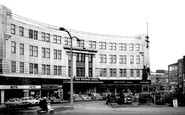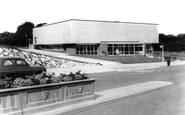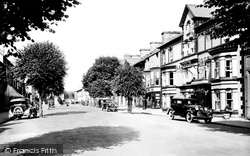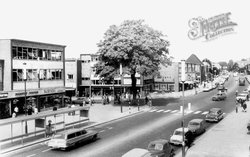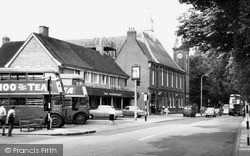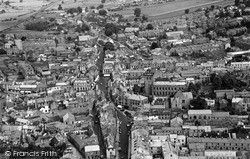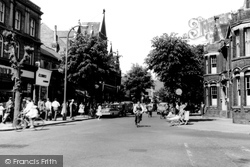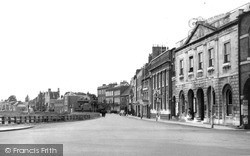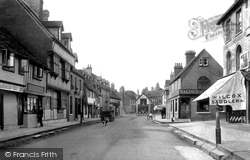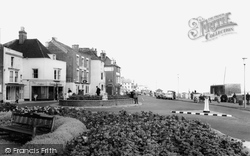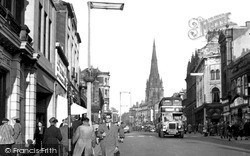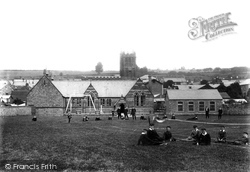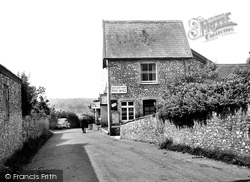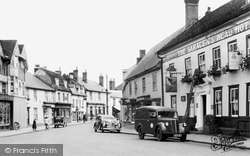Places
26 places found.
Those places high-lighted have photos. All locations may have maps, books and memories.
- Town End, Derbyshire
- Town End, Buckinghamshire
- Town's End, Somerset
- Towns End, Dorset
- Town End, Merseyside
- Town End, Cambridgeshire
- Town's End, Buckinghamshire
- West End Town, Northumberland
- Bolton Town End, Lancashire
- Kearby Town End, Yorkshire
- Town End, Cumbria (near Grange-Over-Sands)
- Town End, Cumbria (near Bowness-On-Windermere)
- Town End, Yorkshire (near Huddersfield)
- Town End, Yorkshire (near Wilberfoss)
- Town End, Cumbria (near Appleby-in-Westmorland)
- Town's End, Dorset (near Melbury Osmond)
- Town's End, Dorset (near Swanage)
- Town End, Cumbria (near Ambleside)
- Town End, Cumbria (near Lakeside)
- Town End, Cumbria (near Kirkby Lonsdale)
- Town End, Cumbria (near Ambleside)
- Town's End, Dorset (near Bere Regis)
- West-end Town, South Glamorgan
- Townend, Derbyshire
- Townend, Strathclyde (near Dumbarton)
- Townend, Staffordshire (near Stone)
Photos
26 photos found. Showing results 2,821 to 26.
Maps
195 maps found.
Books
160 books found. Showing results 3,385 to 3,408.
Memories
3,719 memories found. Showing results 1,411 to 1,420.
Walks On The Downs
We lived in Brancaster Lane - we often played and walked our dogs on the Downs. We lived in the area from the early 1960s to the early 1970s. We moved in the year of a really heavy snowfall - when the snowplough went ...Read more
A memory of Riddlesdown
A First Illicit Drink
After leaving school I worked for a short time at Walsall Co-op in Bridge Street. One of my colleagues was a rather raffish young gentleman and 'man about town'. One day he invited me, which I thought a great honour, to have ...Read more
A memory of Walsall in 1962 by
Early Years
I was born in Carshalton and lived at 5 Pelton Avenue for the first 10 years of my life. A Mr Ely lived at No 1, Mr and Mrs Townsend with their 2 children Catherine and Michael, at no 3, us, then known as Barbara Coleman at no 5, Mr ...Read more
A memory of Belmont in 1948 by
Sea Boots
At the age of four I was too small to "go to sea" but being so keen to take part in all things fishing I was allowed to stand in my granda Ross's (Dote) big sea boots. I was in the front garden at Hilton on Shore Street and ...Read more
A memory of Hilton of Cadboll in 1955 by
1960 Yanks Invade Earith
In 1960 my father returned to England with the US Air Force, stationed in Alconbury. This was the first time he'd seen England again, having been shot down after taking off on a bombing mission in Germany, originating from ...Read more
A memory of Earith in 1960 by
Corby In The 1950s
I lived with my family in Burns Drive, Corby, until I was about six. Our house backed onto the playing fields of Rowlett Road School and my grandparents lived on the corner of Rowlett Road and Tanfields Grove. I can remember ...Read more
A memory of Corby in 1955 by
Ancestors From Upwell
Upwell Norfolf was the home of my husband's ancestor Charles Overland (1817-1908). We recently visited Upwell and saw the church and a tombstone of a George Overland but could find no more. Memories were passed down over the ...Read more
A memory of Upwell by
Burnt To The Ground In The Late Seventies.
From what I can remember a very good library. I lost a lot of my course work when it burned down. I had been finishing my essays off and forgot to pack them in my bag before leaving to retire to the ...Read more
A memory of Corby by
Fazeley In The 1970s
I remember the beach-like atmosphere at Bourne brook off Brook End, Fazeley in the summer months (early to mid 1970s). Whole families would sit and watch their children swim in the brook. I learned to swim and fish here. I ...Read more
A memory of Fazeley in 1974 by
School Road And Area
I was born in School Road, just off the High Street in 1943 and lived there till 1968. I remember Inwood Park with the boating lake and the paddle boats. The paddling pool, the tennis courts and the playground. I worked for ...Read more
A memory of Hounslow in 1951
Captions
5,111 captions found. Showing results 3,385 to 3,408.
Although technically part of West Yorkshire, the market town of Ilkley, standing at the entrance to Wharfedale, is best-known as the gateway to the Dales.
The town was once known for the manufacture of knitted woollen stockings and gloves, and it is said that George III wore stockings knitted here; much of the knitting was done in the open air.
Originally a tree lined thoroughfare, Marlowes when it was developed in the early 1950s became the main shopping centre for the new town.
Mitcham is a town with two greens. This view is of Lower Green, and on the right, out of view, is Cricket Green.
Looking northwards we see hostelries, public houses and stores straddle the streets, highlighting Penrith's importance as a thoroughfare on the London to Carlisle and North East to North
Designed by Charles Barry, the Birmingham and Midland Institute opened in 1856, the foundation stone having been laid by Prince Albert in November 1855.
When this picture was taken, the town hall, with its 225 ft tower and spectacular frontage of giant columns and pilasters, was in desperate need of a good clean to rid it of decades of soot and grime.
Corn Market 1951 This classic market town is famous for its broad streets and many inns - The Black Horse can be seen on the left in the picture.
East of Lincoln, Wragby is a market town on the Horncastle and Skegness road which is very busy at weekends and in summer.
What the Army did for Aldershot, the London and South Western Railway Company did for Eastleigh, helping to transform a forgotten rural backwater into a bustling and thriving town.The image of the
The Town Hall, or the Market House as it was formerly known, is first recorded in 1594.
The upper front storey of the Corn Exchange houses the Town Council's chamber and offices.
Once a fishing village, Brighton was rescued by the late 18th-century fashion for sea air and sea bathing.
There is a splendid proportion of medieval and Tudor timber-framed houses; it is even more astonishing that the market infill between Middle Row and the High Street survived traffic imperatives.This view
Middleham was once a major market town, but it is famous for two things: the training of racehorses, and its castle, home to Richard III.
When this picture was taken, the town hall, with its 225ft tower and spectacular frontage of giant columns and pilasters, was in desperate need of a good clean to rid it of decades of soot and grime
A glorious array of colour greeted visitors to this part of the town, which had something for everyone.
A bus to Pedders Lane and Ashton-on-Ribble plies down Fishergate, but so busy has Preston become, that drastic alterations in regulating traffic have had to be made.
This clock tower was erected in 1872, and dominates this small junction in the town.
This large and imposing building complete with clock tower, built in something of a Victorian neo-Gothic style, was home to the Town Council and associated bodies.
Beyond is the late 15th-century church of St Mary; its superb west tower owes its scale and magnificence to the town's medieval wool prosperity, and is something of a copy of Wells Cathedral's sublime
The town, now more peaceful since the A303 bypass was completed, is mostly built in the warm golden Ham stone with Georgian and 19th-century frontages.
It was purchased by the town from the manor of Shirley in 1228 for ten silver marks—quite a bargain!
The Saracen's Head—on the right of this picture—was a famous coaching inn at Great Dunmow, a town associated since 1949 with the Dunmow Flitch ceremony.This had originated at Little Dunmow in 1140
Places (26)
Photos (26)
Memories (3719)
Books (160)
Maps (195)

